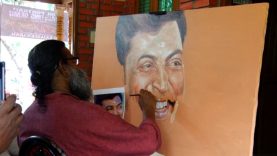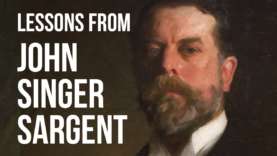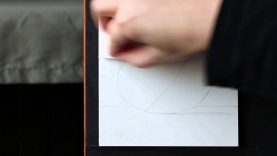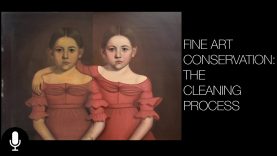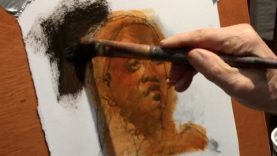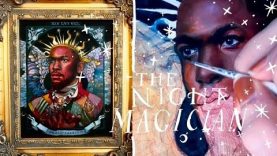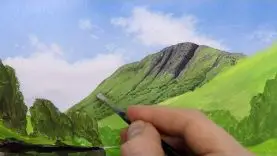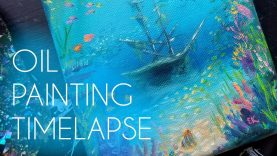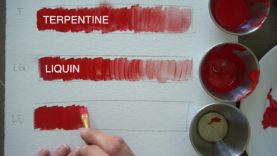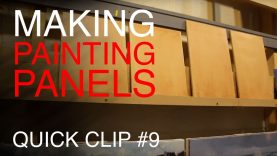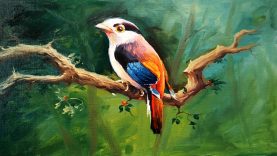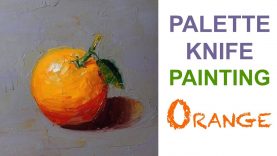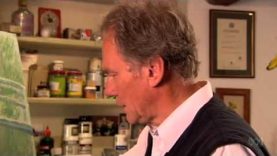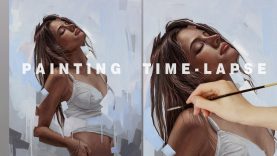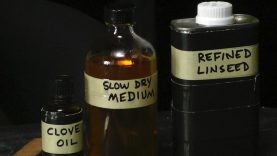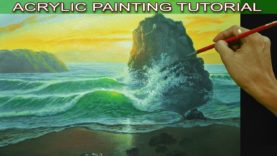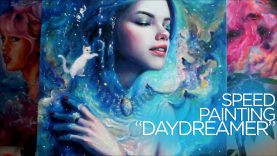The Oil Painting Techniques: Fat over Lean, Imprimatura Part 5/7
http://art.webartacademy.com/join-the-club
Oil Painting Techniques
‘Fat over Lean’ rule
Oil paint is a slow drying artists’ material that gives more time to change the colour, texture or shape of the artwork. It dries by oxidation, not evaporation, and therefore holds its texture and volume after drying.
There is one basic rule fine artists should observe in oil painting. It is called ‘fat over lean’. This means that each new layer of paint should contain more oil than the layer below. If each additional layer contains less oil, the final painting might crack and peel. The paint with the higher oil content remains more flexible.
Working in Layers
Working in layers is used when painting requires more than one session. The first layer may be a ground, usually applied all over the surface. Then an under-drawing in outline may follow. Then comes under-painting, over-painting, and finally semi-transparent glazes. When the painting is completely dry it is covered with protective varnish. All of these layers will affect the appearance of the final look.
Underdrawing
The artist might sketch or transfer an outline of his/her subject on the support before applying oil paint. Such drawing on the ground is called “Underdrawing.”
The Old Masters, like Jan van Eyck and Rogier van der Weyden, “underdrew” with a brush, making hatching strokes for shading, using water-based black or brown paint.
When artists wanted to keep the ground fresh and clean, the preliminary drawing, called cartoon, was created in full-size, and transferred onto support by pouncing the outlines and dusting charcoal powder through perforations. There are many other ways of the drawing transfer, including optical projections, drawing by squares, etc.
Imprimatura
“Imprimatura” is a very transparent layer of oil paint well diluted in turpentine or other solvent. It is used to “tone” the canvas by covering the white gesso with required colour, providing an overall tonal optical unity. The artist chooses the colour depending on the desired general tone of the artwork. Very often earth colours like raw sienna were used for this task.
The term Imprimatura comes from the Italian and literally means “first paint layer.” It has origins is workshops during the Middle Ages, and was used by Italian painters during the Renaissance.
Following layers should be applied with care so the imprimatura sometimes can be seen through in the middle to dark shadow areas of the work.
http://art.webartacademy.com/join-the-club
Underpainting
Some artists skip the imprimatura coat and start with the “underpainting” layer. Underpainting is laid down as a thin lean layer. It serves as a base that is intended to be painted over.
Most often, brown paints used for this task like Vandyke Brown, Raw Umbra or “bone colour” (1 part raw umber 1 part yellow ochre). Underpainting can also be done in bluish, greenish or greyish colours and will be described in more detail later.
Underpainting can be monochromatic, but it can also be a multi-colour. The Old Masters like Giotto, Jan van Eyck and Roger van der Weyden sometimes used multi-colour underpainting. In this way they ensured the colours in various layers do not physically blend with each other becoming muddy, but compliment each other by showing through transparent and semi-transparent layers.
Here is the good tip for professionally done underpainting. If it is painted properly, it greatly helps the overpainting. However, if fine artists have to overpaint the underpainting concealing it completely, then the purpose of the underpainting is lost, as it no longer contributes to the overall painting appearance.
Sometimes artists leave painting as completed artworks at the stage of underpainting. If such painting is executed in shades of brown, then it can be called “brunaille”, or painted “En brunaille.”



